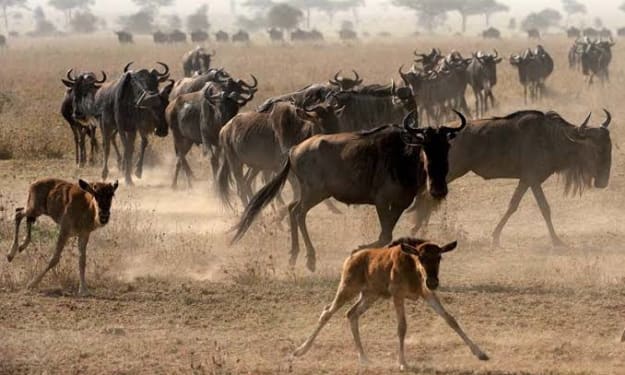
The giant panda is a bear that lives in the South of
China. It is characterized (the distinctive nature)
by its bold black-and-white coat and a fat body.
This bear is adored by the world and is considered a
national treasure in China. The giant panda eats
bamboo shoots and leaves. As much as 16 hours
out of every 24 hours is spent feeding. The giant
panda lives in a few mountain ranges in China
mainly in Sichuan. As a result of farming,
deforestation, and other developments the giant
panda has been driven out of the lowland areas
where it once lived. A report shows that 239
pandas living in captivity in China and another
27 pandas outside the country. At December
2014, 49 giant pandas lived in captivity outside
China, living in 18 zoos in 13 different countries.
One estimate shows that there are about 1,590
pandas living in the wild. Did you know that a
giant panada eats around 26 to 84 pounds of it
every day? A newborn panda is about the size of
a stick of butter about 1-900th the size of its
mother. Female panadas can grow up to about
200 pounds, while male panadas can grow up to
about 300 pounds as grownups. The height of a
panda is 60 – 90 centimeters. Even though
pandas love to sleep and eat bamboo they can
also be very playful. The black-and-white
markings have two functions: camouflage and
communication. The scientific name of a giant
panda is Ailuropoda melanoleuca. These bears
are excellent tree climbers and are also very good
swimmers. despite being fat. Pandas can climb
as high as 13,000 feet. The lifespan of a panda is
20 years. The newborn panda is blind and
covered with only a thin all-white coat. It’s eyes
begin to open at about 45 days, and the first
wobbly steps are taken at 75–80 days. By 14
months the infant readily consumes bamboo.
Baby panda cub sleeping on a branch. Pandas eat almost nothing but bamboo shoots and leaves. Occasionally they eat other vegetation, fish, or small mammals, but bamboo accounts for 99 percent of their diets.
Pandas eat fast, they eat a lot, and they spend about 12 hours a day doing it. The reason: is that They digest only about a fifth of what they eat. Overall, bamboo is not very nutritious. To stay healthy, they have to eat a lot—up to 15 percent of their body weight in 12 hours—so they eat fast.
Pandas' molars are very broad and flat. The shape of the teeth helps the animals crush the bamboo shoots, leaves, and stems that they eat. They can chomp on bamboo up to one-and-a-half inches thick.
To get the bamboo to their mouths, they hold the stems with their front paws, which have enlarged wrist bones that act as thumbs for gripping. A panda should have at least two bamboo species where it lives, or it will starve. A scarcity of bamboo threatens the already limited panda population.
An adult female panda weighs 200 pounds. Pandas can climb as high as 13,000 feet and are also very good swimmers. Sometimes male pandas relax by doing handstands against trees.
Pandas are shy; they don't venture into areas where people live. This restricts pandas to very limited areas.
Giant pandas are docile overall and often lower their heads or shade their faces with their front paws in an attempt to conceal themselves when they come across a human for the first time. They seldom attack people or other animals, choosing to try and evade conflict first.





Comments
There are no comments for this story
Be the first to respond and start the conversation.